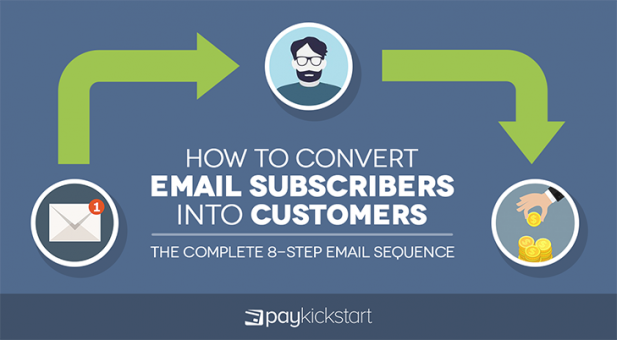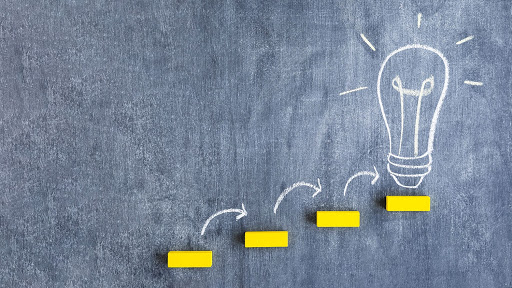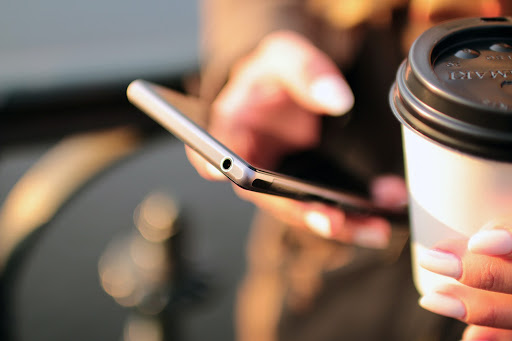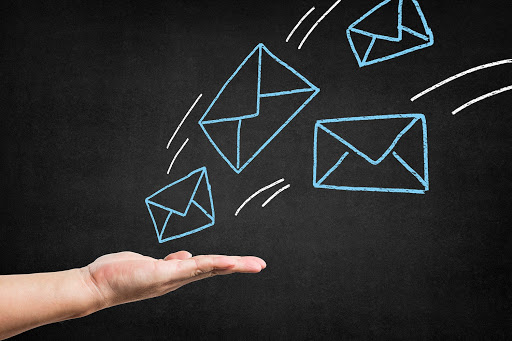Subscription growth hack (by PayKickstart)
Facebook Group - 3,932 members
Visit Group
Marketers will swear up and down about the wonders of email marketing. Some will even go to the extent of calling them the best possible tool you could deploy in your marketing strategy.
Done wrong, and you could have tens of thousands of email subscribers—and less than a third of them could be paying customers.
While you should never lose focus on gaining more subscribers, it’s time to also shine a spotlight into converting them into customers.
Here are 8-steps you could immediately start using to finally make your email marketing strategy just as profitable as it’s meant to be.
Email 1: Make good on your promise.

To increase the number of opt-ins, you’ve clearly offered your readers something of value.
Whether that’s through a free small business plan PDF, a free slot to your webinar or anything at all really—this is where you provide it clearly. No strings attached.
In the context of this email, it’s also the perfect time to get to know your readers turned subscribers.
What’s their professional background? What do they struggle with? When they stumbled upon your website, did it solve a problem they had? It’s the perfect way to get to know who exactly these opt-ins are best suited towards.
Email 2: The Introduction

More than ever, this is the time you establish a real connection with your subscribers.
This is where you introduce yourself, what it is that drove you to create this website and how you’re going to help!
It’s always essential to have this as a second email, so that your subscribers now that you’re not just interested in gaining them as a subscriber and leaving—that you’re actually here to solve a problem they have.
If you really want to hit this home, shoot them another question. What did they learn from their last freebie in the previous email? These results and answers can be used to your benefit in the future, if only to tweak your future content.
Email 3: Providing a solution.

Once you’ve set a solid foundation between you and your subscribers, it’s time to move fast.
Differentiate yourself from just an average ‘guru’ that provides advice, show them proof.
This could come in the example of a comprehensive case study from a customer in the past.
A powerful weapon to have in your arsenal. In fact, customer experience is even predicted to overtake price and product as the most important piece in being a brand differentiator in 2020.
Pro Tip: Case studies don’t come easy. Plus, you need significant, tangible results that a customer can boast about. The inspiration for a potential case study gem comes from always being in communication with your subscribers and engaging with them on socials.
Email 4: A Sense Of Belonging.

Before your subscribers can fully trust you, they need to trust those who have purchased your product or service first.
Ease them into it by sharing authentic responses you managed to get from a fan/subscribers who’s experienced your content.
This could be done via compiling decent reviews of Amazon, your Shopify page, Facebook, etc and sharing it in your email.
Email 5: But Why Should They Trust You?
Tell a personal story. One that’s full of rookie mistakes, the rise to success, downfalls and hard lessons learnt.
If you’re in a competitive niche, there might be tens of thousands of marketers who are fighting neck and neck to stand out from the crowd.
‘Branding’ yourself starts with telling your subscribers why you have the authority and credibility to tell them what to do. Even if it’s to stop them from making similar mistakes, or providing them hacks to a more effective solution.
Email 6: Give Them Social Proof.

If you have any hopes to amass more paying customers, social proof is key.
There are a couple of successful ways of doing this. First, user testimonials that are a bit more intimate to a specific customer experience.
Then there’s sharing business credentials (stars rated on Amazon, Facebook, etc). If you have the good fortune of having your product used/recognised by a significant leader of industry too—go ahead and hammer that home!
Since you’re going to start selling in the next email, leave some breadcrumbs in this one. Create some buzz and build up for the message that’s coming, but please avoid trigger words that might shelve your email as spam!
Email 7: Ease Into Selling.

Unless you’re insanely lucky, your subscribers are going to immediately agree to the idea of buying something from you. Especially if what you’re selling is on the pricey side.
Don’t jump the gun! Start off with introducing your low-priced entry products to get them warmed up to the idea of your brand and all that it has to offer.
This is also known as a tiered pricing system—which is meant to lay the foundation of trust before your subscribers can even think about buying premium products from you.
Email 8: Give them a case of FOMO.
An offer that’s only available for a limited amount of time, or only at a certain price for only so long is the perfect way to entice your customers to get it, and do so quickly.
Another way this is done is through discounts that would expire soon, a coupon to be used on the second purchase, etc.
This would be the final money shot. If you’ve managed to execute all prior 7 steps correctly—your subscribers should be confident enough to make their first purchase with your brand.
When marketers rave about the success of email marketing, they do so because they’ve got the science behind it down to a tee.
They focus on the right content and emotional cues at the right time, and with the right methods instead of just playing guessing games.
Converting your subscribers into paying customers should be a process that works on the same logic—instead of just trying to convert them when it’s convenient.
As always, you’re only going to see real results when you have a solid blueprint to do so! I hope this guide proves useful for you, please connect with me or leave a comment below and I’ll be sure to get back to you.
Jeremy Ong is the founder and CEO of HUSTLR - a website about running online businesses with a media first approach. He has been running online businesses for the past 6 years and is now focused on helping others achieve financial freedom from doing the same.
Read More About Jeremy Ong